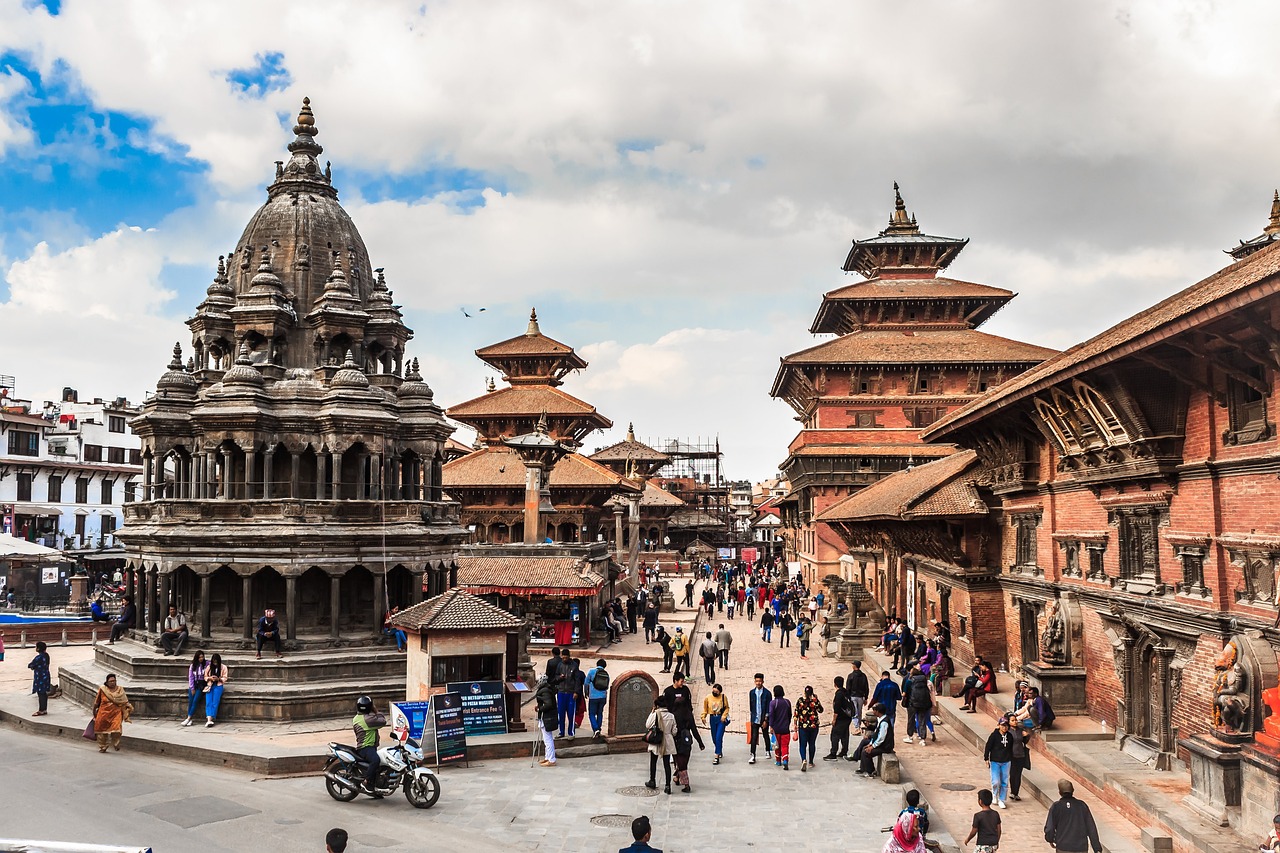Nestled in the heart of Kathmandu, Durbar Square stands as a testament to Nepal’s rich cultural heritage and architectural splendor. This UNESCO World Heritage Site, also known as Hanuman Dhoka Durbar Square, is a living museum where centuries of history come alive amidst intricately carved temples, palaces, and courtyards. Join us on a journey through this timeless gem, where every corner tells a story of the kingdom’s glorious past.
A Glimpse into History
Durbar Square served as the royal palace complex of the Malla and Shah kings of Nepal for centuries, making it the political, religious, and cultural center of the Kathmandu Valley. The name “Durbar Square” translates to “Palace Square” in Nepali, reflecting its regal significance.
As you step into the square, you’re immediately transported back in time to an era of royal grandeur and architectural marvels. The opulent palaces, ornate temples, and intricately carved wooden structures bear witness to the craftsmanship of generations past.
Architectural Marvels
One of the most striking features of Durbar Square is its impressive array of temples, each a masterpiece of Newari architecture. The Kumari Bahal, or Kumari House, is a prime example, renowned for its exquisite woodcarvings and traditional pagoda-style architecture. This sacred dwelling is home to the Kumari, a young girl revered as the living goddess of Nepal.
Nearby stands the Kasthamandap, believed to be the oldest building in Kathmandu Valley. Legend has it that the entire structure was built from the wood of a single sal tree, giving rise to its name, which translates to “Wooden Pavilion.” The intricately carved wooden panels and pagoda-style roof make it a must-see attraction for visitors to Durbar Square.
The Taleju Temple, dedicated to the goddess Taleju Bhawani, is another architectural marvel that dominates the square’s skyline. This towering pagoda-style temple, adorned with intricate carvings and gilded roofs, is a symbol of Nepal’s religious devotion and artistic heritage.
Cultural Significance
Durbar Square isn’t just a collection of ancient buildings—it’s a living testament to Nepal’s vibrant cultural traditions and religious practices. Locals and pilgrims alike flock to the square to pay homage to the deities enshrined in its temples, offering prayers and performing rituals passed down through generations.
One of the most sacred rituals observed in Durbar Square is the daily Kumari Puja, where the living goddess Kumari receives offerings from devotees. Witnessing this age-old tradition is a humbling experience that offers insight into Nepal’s unique blend of Hinduism and Buddhism.
Exploring the Surroundings
Beyond the main square, Durbar Square encompasses a network of narrow alleyways and hidden courtyards waiting to be explored. Lose yourself in the labyrinthine streets lined with colorful market stalls, where artisans sell traditional handicrafts, jewelry, and souvenirs.
Make sure to visit the nearby Nasal Chowk, a courtyard adorned with intricate woodcarvings and a golden door that once served as the entrance to the Hanuman Dhoka Palace. Here, you’ll find the Hanuman Dhoka Museum, which houses a fascinating collection of artifacts, artwork, and royal regalia dating back to the Malla and Shah dynasties.
Practical Tips for Visiting Durbar Square
Before you embark on your journey to Durbar Square, here are some practical tips to enhance your experience:
- Opening Hours: Durbar Square is open to visitors from early morning until late afternoon. Plan your visit accordingly to avoid the crowds and make the most of your time exploring the square.
- Entrance Fee: There is an entrance fee for foreigners to enter Durbar Square, which helps fund the preservation and maintenance of this historic site. Be sure to have cash on hand to pay the fee upon entry.
- Respectful Attire: As Durbar Square is a religious site, it’s important to dress modestly out of respect for the local customs and traditions. Avoid wearing revealing clothing and remove your shoes before entering temples and sacred spaces.
- Guided Tours: Consider hiring a local guide to provide insight into the history, architecture, and cultural significance of Durbar Square. Their expertise will enrich your visit and help you gain a deeper appreciation for this iconic landmark.
Conclusion: A Journey Through Time
Durbar Square is more than just a collection of ancient buildings—it’s a living testament to Nepal’s rich cultural heritage and spiritual legacy. From its towering temples to its labyrinthine alleyways, every corner of the square tells a story of a bygone era, inviting visitors to embark on a journey through time.
As you wander through the hallowed halls and sacred courtyards of Durbar Square, take a moment to pause and reflect on the centuries of history that have unfolded within its walls. Whether you’re a history buff, a culture enthusiast, or simply a curious traveler, Durbar Square promises an unforgettable experience that will leave an indelible mark on your soul.
So come, step into the past and immerse yourself in the timeless beauty of Durbar Square—a place where history comes alive, and every stone whispers secrets of a kingdom lost in time.


